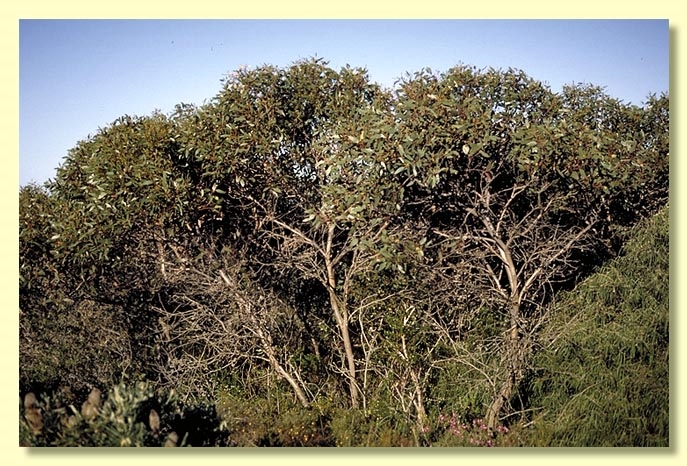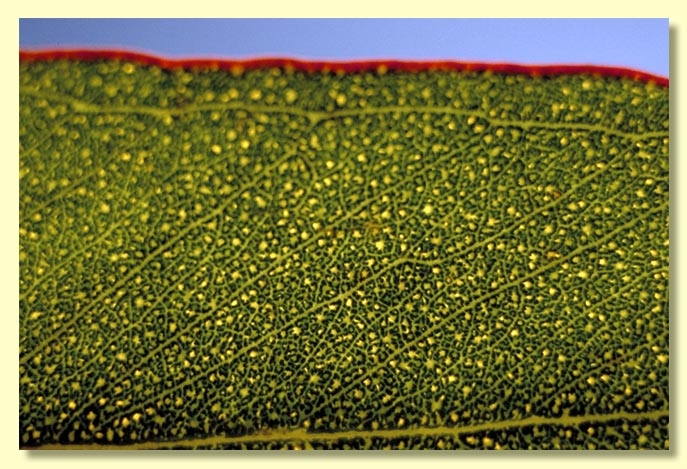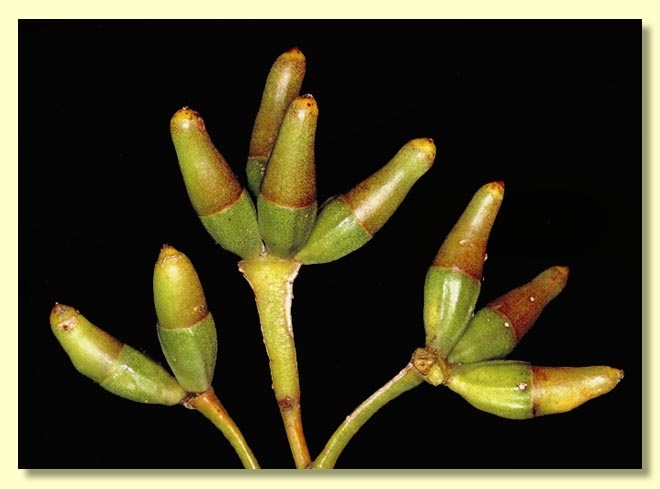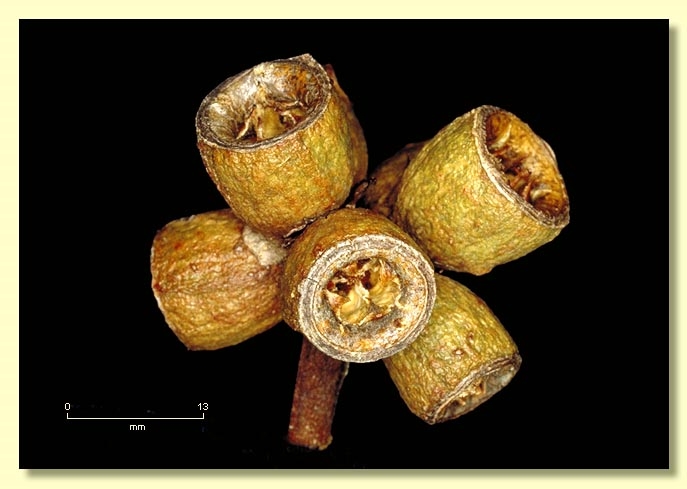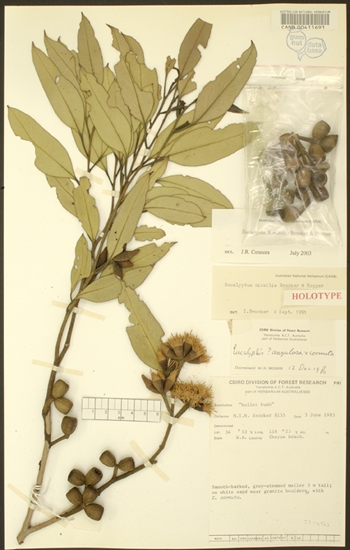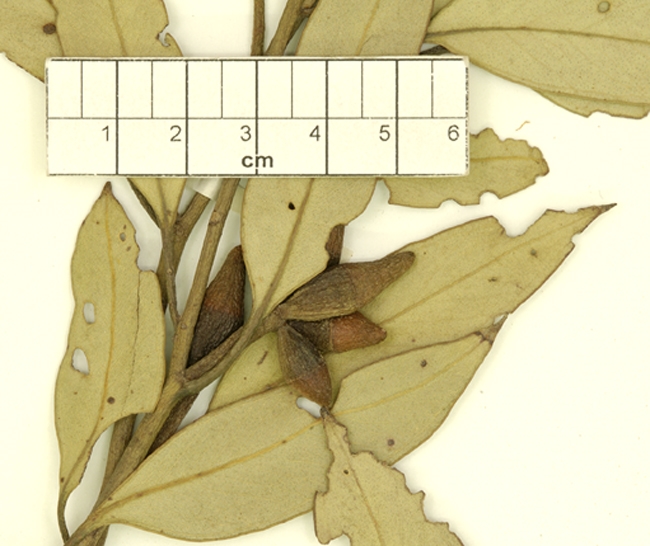Euclid - Online edition
Eucalyptus x missilis
Eucalyptus | Miscellaneous hybrids
The x in the above binomial indicates hybrid status and is used here in accordance with Australian Plant Census https://biodiversity.org.au/nsl/services/apc accessed 19 April 2017.
Bark smooth throughout, becoming granular for basal 0.5 m of trunk.
Branchlets may have oil glands in the pith, or lack them.
Juvenile growth (coppice or field seedlings to 50 cm): not seen.
Adult leaves alternate, petioles 0.8–2.5 cm long; blade ovate to lanceolate, 6–12.5 cm long, 1–3.5 cm wide, base tapering to petiole, margin entire, apex pointed, concolorous, glossy, mid-green, side-veins at an acute or wider angle to midrib, reticulation dense to very dense, intramarginal vein remote from margin, oil glands intersectional.
Inflorescence axillary unbranched, peduncles stout, scarcely flattened to flattened, 1.2–3.5 cm long, buds (?7) to 15, sessile or rarely shortly pedicellate (pedicels to 0.3 cm long). Mature buds more or less fusiform, 1.7–2.3 cm long, 0.7–0.8 cm wide, scar present, operculum bluntly conical, a few outer stamens may be erect but most stamens inflexed to some degree, anthers oblong, versatile, dorsifixed, dehiscing by longitudinal slits, style long and straight, stigma blunt, locules usually 4, the placentae each with 4 or 6 vertical rows of ovules, or with 4 clear rows on the upper part of placenta and rows obscure on lower part of the placenta. Flowers pale yellow.
Fruit usually sessile, rarely pedicels to 0.2 cm long, cylindrical to cupular, 1–1.5 cm long, 0.8–1.5 cm wide, disc descending vertically, valves usually 4, at rim level.
Seeds black, 2–4 mm long, flattened-ovoid, slightly ridged ventrally, dorsal surface obscurely reticulate, a narrow marginal flange present on many but not all seeds, hilum ventral.
Cultivated seedlings (measured at node 10): cotyledons bilobed, variable in degree of lobing; stems rounded in cross-section, smooth or slightly warty; leaves always petiolate, opposite for 2 or 3 nodes then alternate, ovate to orbicular or elliptical, 4.5–9 cm long, 3–5.5 cm wide, base tapering or truncate, dull, pale green.
Flowering time unknown.
A mallee endemic to Western Australia with strictly south coastal distribution from West Cape Howe east to Cape Le Grand, on sand over limestone. It has smooth bark that becomes granular on larger stems and glossy mid-green leaves.
Eucalyptus x missilis is probably a hybrid between two common coastal species E. cornuta and E. angulosa. There seems to be considerable morphological uniformity between plants in populations of E. x missilis, and features are intermediate between the two purported parents. For example, they share the arrangement of stamens in the bud—some erect, most inflexed. E. cornuta has fully erect stamens in bud, E. angulosa has completely inflexed stamens in bud. Ovules are in four rows in E. cornuta and six to eight rows in E. angulosa and four or six rows in E. x missilis. Bud shape and size in E. x missilis is also in-between the two parents, as is seed shape. Seedlings grown from E. x missilis show robust bisected to bilobed cotyledons somewhat similar in shape but much coarser than E. cornuta whilst E. angulosa has reniform cotyledons. Seedling leaves of E. x missilis at ca node 10 are variable in shape from ovate to orbicular or elliptical. E. cornuta has bluntly ovate to orbicular leaves and E. angulosa has ovate to deltoid leaves with a pointed apex. This segregation in leaf shape in the seedlings suggests that the seed came from a hybrid plant or that the occurrences are an established hybrid.
The purported parents of E. x missilis belong to quite widely separated higher taxonomic groups within Eucalyptus subgenus Symphyomyrtus, according to the classification of Brooker (2000). E. angulosa belongs to section Dumaria series Incrassatae, whilst E. cornuta belongs to section Bisectae subsection Hadrotes series Cornutae.

